- Home
- Arthur Conan Doyle
The Complete Sherlock Holmes, Volume I (Barnes & Noble Classics Series) Page 2
The Complete Sherlock Holmes, Volume I (Barnes & Noble Classics Series) Read online
Page 2
1917 The Holmes story collection His Last Bow is published.
1918 The author’s eldest son, Kingsley, dies from war wounds and in fluenza. World War I ends. Conan Doyle publishes The New Rev elation, his first book on spiritualism. Gerard Manley Hopkins’s Poems is published.
1919 Conan Doyle’s brother, Innes, dies from pneumonia. Another book on spiritualism, The Vital Message, is published.
1920 From this year until his death, the author acts as an advocate for spiritualism.
1921 Conan Doyle’s mother, Mary, dies. Jean experiments with auto matic writing.
1922 Conan Doyle tours America in support of spiritualism. T. S. Eliot’s The Wasteland and James Joyce’s Ulysses are published.
1924 Conan Doyle’s autobiography, Memories and Adventures, is pub lished.
1926 The last Challenger novel, The Land of Mist, is published, as is Conan Doyle’s two-volume History of Spiritualism.
1927 The final Holmes story collection, The Case Book of Sherlock Holmes, is published. Virginia Woolf’s To the Lighthouse is pub lished.
1930 Sir Arthur Conan Doyle dies on July 7 at his home in Sussex from an illness resulting from a heart attack.
GENERAL INTRODUCTION
Sir Arthur Conan Doyle lived an interesting life by any standard. As a young ship’s surgeon he sailed the Arctic in a whaling ship, and later he steamed down the west coast of Africa on a cargo vessel. In midlife his fame as a writer opened doors all over the world. He showed some finer points of golf to Rudyard Kipling in a Vermont field, and argued in the newspapers with his neighbor, Bernard Shaw, about the Titanic. He climbed the top of the Great Pyramid in Giza, and lectured the deacons in the Great Mormon Tabernacle in Utah. As a champion of spiritualism he proclaimed that a pharaoh’s curse could indeed have caused the death of Lord Carnarvon, the patron of the Tutankhamun expedition, and assured the public that Agatha Christie, who had mysteriously disappeared, would show up safe and sound because a psychic to whom he had taken one of her gloves predicted it. He was knighted by King Edward VII for writing a pamphlet justifying the British cause in the Boer War. He wrote what he thought were important historical novels in the manner of Sir Walter Scott and through them hoped to establish his legacy. Ironically enough, all these events have a chance to be remembered only because he also created what he regarded as “a lower stratum of literary achievement,” his peerless detective, Sherlock Holmes.
Holmes has become as famous as any character in literature. His name is synonymous with brilliant deduction. Call someone “Sherlock” and everyone knows what you mean. The stories have been in print continuously since the time the first one, A Study in Scarlet, was published in 1887. In addition Holmes has been the leading character in hundreds of plays, films, and television shows. He made his debut in films even before Conan Doyle had finished writing the stories. Long before Basil Rath-bone and Nigel Bruce created their memorable roles of Holmes and Watson in films of the late 1930s and the 1940s, the celebrated sleuth had already been played by a host of actors on stage and screen. The stories continue to be filmed today. You have probably seen one of the excellent Granada Television episodes with Jeremy Brett, which may well be the reason you are reading this book.
Sherlock Holmes has such a strong hold on the popular imagination that he is no longer moored to the books in which he first appeared. Not satisfied by the fifty-six short stories and four novellas of the Holmes canon, writers first adopted the character by completing cases Dr. Watson had mentioned only in passing. Soon they constructed new episodes for the master detective. Film directors followed suit. Though many films have been scrupulously true to the plots of the stories, some have created their own plots. Such films include Young Sherlock Holmes (1985), which invented a childhood for the detective. In it Holmes and Watson meet as teenagers at a boarding school where Professor Moriarty, Holmes’s great nemesis in the books, is an encouraging teacher. It also introduces a love interest for Holmes, a young girl whose death at the hands of Moriarty, who turns into a deadly foe, explains why Holmes was never the marrying kind. The Seven-Per-Cent Solution (1976) sends Holmes to Vienna to meet Sigmund Freud, who traces Holmes’s obsession with Moriarty to a repressed memory of his mother in the arms of the professor. In perhaps the boldest reimagining of the stories, and certainly the most amusing, Without a Clue (1988) reveals that Watson was the real detective genius and that Holmes was his fictional creation; when the public clamored to meet Holmes, Watson hired a dim-witted actor to play the role.
So powerful is the Holmes persona that even tangential connections attract viewers. In 2000 and 2002 the Public Broadcasting System aired a joint British-American series of mysteries that featured Conan Doyle and his teacher, Dr. Joseph Bell, on whom Holmes was partly modeled, as characters solving crimes in the manner of Holmes and Watson. Called Murder Rooms: The Dark Beginnings of Sherlock Holmes, the episodes weave incidents from Conan Doyle’s life into fictional plots that foreshadow the great stories to come. But clearly the draw for the series is the name of the immortal detective.
So how did this all begin? While the springs of creation are always ultimately mysterious, they are never entirely hidden. As with every mystery, there are clues. The most promising sources, as with most writers, are biographical.
Arthur Conan Doyle was born in Edinburgh, Scotland, in 1859. He was a healthy, athletic lad, who appeared to have a happy childhood. He grew up in a middle-class family with a keen sense of its place in society and history. His family was originally from Ireland. His grandfather, John Doyle, like many gifted Irishmen, had moved to London, where he made his name as a political cartoonist. His four sons all became artists of one sort or another. Conan Doyle’s Uncle Richard knew Dickens; a warm letter from the great novelist survives in the family archives. Richard was also a friend of William Thackeray, whose works he had illustrated. The author of Vanity Fair once bounced young Arthur on his knee while paying a visit to Conan Doyle’s father, Charles, who worked as a young architect in the Government Office of Works. He carried on the family’s artistic tradition by painting in his spare time. Arthur’s mother, Mary, also of Irish parentage, traced her descent back to the Plantagenets on one side and Sir Walter Scott on the other, both sources of considerable pride. Arthur Conan Doyle grew up in a stable society well worth valuing. Nothing in his early life gave him any reason to be a reformer. His great detective would one day uphold the values of this social order, acting as a mainstay of the status quo.
Arthur had a very good education. His thorough knowledge of both ancient and modern classics is clear from reading the Holmes stories. His parents sent him to Jesuit boarding schools, where he initially rebelled against their harsh discipline, as well as the dullness of his studies. His outlook changed when he discovered the essays of English historian and poet Thomas Macaulay, who died the year Conan Doyle was born. Though hardly anyone reads Macaulay today, he was immensely influential in the nineteenth century. Conan Doyle was entranced by his language and his sharp, colorful pronouncements. Macaulay made history a source of wonder and romance. He was also an unapologetic believer in the superiority of British life. It is not as if there weren’t a thousand springs from which any young British boy could drink in this notion, but Macaulay supplied a river of it to Conan Doyle. He carried a volume of the essays around with him the rest of his life, claiming Macaulay had influenced him more than anyone else.
After graduation from boarding school, it was time to choose a career. Since it appeared that Conan Doyle did not inherit the family’s artistic genes, he decided on a career in medicine. It was at the medical school in Edinburgh that he met the two men who would have the most influence on his conception of Holmes. The first was the surgeon Dr. Joseph Bell; Conan Doyle later claimed he was the model for Sherlock Holmes. Bell regularly amazed his students by deducing facts about his patients from minute observations of their appearance and behavior. Conan Doyle’s autobiography, Memories and Adventures (see “For Further Readin
g”), lists only one example of the doctor’s deductive powers.
In one of his best cases he said to a civilian patient: ‘Well, my man, you’ve served in the army.’ ‘Aye, Sir.’ ‘Not long discharged?’ ‘No, Sir.’ ‘A Highland regiment?’ ‘Aye, Sir.’ ‘A non-com officer?’ ‘Aye, Sir.’ ‘Stationed at Barbados?’ ‘Aye, Sir.’ ‘You see, gentlemen,’ he would explain, ‘the man was a respectful man but did not remove his hat. They do not in the army, but he would have learned civilian ways had he been long discharged. He has an air of authority and he is obviously Scottish. As to Barbados, his complaint is Elephantiasis, which is West Indian, and not British’ (p. 330).
That could well be Sherlock Holmes interrogating a visitor at 221B Baker Street. Bell’s reasoning powers made so strong an impression on Conan Doyle that he turned to those memories when he decided to write a detective novel. When the first twelve stories were published in book form as The Adventures of Sherlock Holmes, Conan Doyle asked Bell if he might dedicate them to him. Robert Louis Stevenson, who also knew Bell, wrote to congratulate Conan Doyle on “your very ingenious and very interesting adventures of Sherlock Holmes.” At the end of the letter Stevenson asks, “Only one thing troubles me: can this be my old friend Joe Bell?”
Dr. Bell wasn’t the only model, though. Some aspects of Holmes were derived from George Budd, a fellow medical student Conan Doyle met on the school’s rugby team. Brilliant but mercurial, Budd could talk expansively on subject after subject, then lapse into moody silence. The life of the party at one moment, he could turn violent the next. The two were friends at medical school, but they lost track of one another when Budd moved away after graduation in 1881. In 1882, after Conan Doyle had spent some postgraduate time at sea, Budd summoned him to Plymouth, England, to start a practice there.
Budd had made a tremendous success of his practice by flouting every rule of medical etiquette. He yelled at his patients, pushed some against walls, cursed others, told many they ate too much, drank too much, and slept too much. Sometimes Budd refused even to see them, proclaiming to an anxious clutch in the waiting room that he was going to spend the day in the country. Despite this bizarre behavior, or perhaps because of it, his consulting services were enormously popular. No doubt a contributing reason was that he charged no fee for his diagnoses. It was no coincidence, however, that Budd prescribed medicine for every patient. Their pills could be conveniently purchased down the hall, where Mrs. Budd typed up the labels for the bottles and took the patients’ money. Budd earned a fortune from this dubious practice. He made a point each day on his way to the bank to carry his earnings in a big bag through the doctors’ quarter of the city, jingling it as he went, just to rankle his fellow practitioners. He was convinced that the rules of medical ethics were a con game to keep young, energetic doctors subservient to their elders.
Conan Doyle was both appalled and amused by this display. When Budd offered to take him on as an assistant, however, he accepted. Budd furnished Conan Doyle with a consulting room in his clinic, then flooded him with advice on how to run his life. One suggestion was to start a novel that very day. Although he had already published one short story, Conan Doyle hadn’t considered writing anything as ambitious as a novel. But because he had no patients as yet and thus plenty of time on his hands, he gave it a try.
There is no evidence that Sherlock Holmes was born out of this circumstance, or that Budd contributed anything more to the character than his energy, range of interests, and black moods. But he contributed something else essential that runs throughout Conan Doyle’s work. Through Budd, Conan Doyle experienced deception and betrayal for the first time. Of course Conan Doyle knew, as we all do, that people can lie and turn against former friends, but it makes a different and certainly deeper impression when it happens to you personally. It came about in the following way.
During his time in Budd’s clinic, Conan Doyle’s mother wrote him letters expressing her displeasure at his involvement with Budd, whom she considered an unscrupulous character. Budd apparently read them without Conan Doyle’s knowledge, and developed a bitter resentment against his friend. At some point he complained that his own practice was dwindling because of Conan Doyle. As Conan Doyle, unlike Budd, really was a man of honor, he immediately went to his office door with a hammer and pulled off his nameplate.
This display of character softened Budd’s resentment, at least for a while. He proposed to lend Conan Doyle a pound a week to help him set up a practice in Portsmouth. Once Conan Doyle moved to that city to restart his medical career, Budd reneged on the payment. He wrote to Conan Doyle, quoting what he considered slanderous passages from a letter of Conan Doyle’s mother, which he claimed the maid had found torn in pieces under the grate. This kind of back-stabbing carried on under his roof was a betrayal he couldn’t forgive, said Budd. He would have nothing more to do with Conan Doyle.
Conan Doyle was stunned. Upon thinking it over, he couldn’t remember ever tearing up any of his letters. Searching through his pockets he found the very one from which Budd had quoted. He realized Budd was lying and must have been reading his mail surreptitiously. He wrote back to say he had seen through the clumsy plot, thanking Budd for removing the only disagreement between himself and his mother by confirming her low opinion of Budd. He assured Budd that any attempt to harm him had backfired.
The incident left a haunting memory. Conan Doyle wrote later, “It was as though in the guise and dress of a man I had caught a sudden glimpse of something subhuman—of something so outside my own range of thought that I was powerless against it” (The Stark Munro Letters, p. 271). He was also powerless to explain it. Whenever he depicts some descent into the abyss of vice, it is inevitably without any insight into how a soul makes such a journey: It is always taken as merely a fact of existence.
It was a few years later, in 1886, after he had set up a mildly profitable medical practice of his own, that Conan Doyle first turned to the idea of a detective novel. In addition to his Edinburgh models, Sherlock Holmes had literary sources, too. Conan Doyle had read and admired the detective stories of Edgar Allan Poe, the creator of the genre, as well as the detective novels of Émile Gaboriau, whose Monsieur Lecoq solved some baffling crimes. Holmes’s methods are similar to those of Poe’s C. Auguste Dupin, and the stories have a structure reminiscent of Gaboriau’s work, but his personality owes nothing to either of those Parisian detectives. And ultimately it is his personality that makes Holmes so compelling.
Just what is it about Sherlock Holmes that has captivated people for so long? It’s easy to see some of the reasons for his popularity. His intelligence, his self-assurance, his mastery of every situation, and his unerring judgment are all enormously appealing. We are also attracted by Holmes’s sense of humor. From the very first Holmes not only sprinkles the stories with his dry retorts and ironic asides, he also laughs, chuckles, smiles, and jokes throughout. This quality goes a long way toward humanizing him, making it easier to feel affection for a character whose abilities could well make him seem more machine than human.
His eccentricities add to his appeal. An unwritten rule says that every commentator must mention the tobacco he keeps in the toe end of his Persian slipper, the cigars he keeps in a coal-shuttle, and the unanswered correspondence he transfixes by a jack-knife into the very center of his wooden mantelpiece. But his odd qualities extend further than these surface details. They are really only shallow tricks that add some local color, perhaps, to his characterization, but reveal little about his character. More revealing of just how truly eccentric he is are the passions central to his mind and the lengths he is willing to go in their service.
Devoting his life to fighting crime, for instance, is surely unusual. With his skills and connections, one would think he could have had his choice of careers. What sort of person dedicates himself to catching people who commit crimes? We don’t need a psychiatrist’s shingle to conclude that someone who feels this need must have suffered some sort of injustice as a
child. As we can never know what this sad event was, we can only speculate, and many have. Whatever it was, it has made Holmes a moralist. It is not the law that he upholds, but his own conception of justice. Several times he substitutes this conception for the letter of British law by letting someone go who is guilty of a crime. Several other times he violates the law himself in order to bring about some higher justice. Those are some of the things we admire about him. Because we always agree with his judgment in those instances, his willingness to become the final arbiter of justice makes him heroic.
Holmes lives as a gentleman, with all the notions of class in nineteenth-century England that the word implies. Yet he does things no gentleman would dream of doing. On one occasion he disguises himself as a beggar, on another as an opium addict, and, most improbably of all, on another as an old woman! Since these disguises help him get to the truth, we think of them, if we think of them at all, as merely techniques, albeit clever and entertaining ones, for solving crimes. But respectable men in London in the 1890s would be aghast at seeing a fellow they knew sauntering forth in a frock and a wig, or holed up in an opium den. Neither would such men pay any but the most begrudging and uncomfortable notice to street urchins beseeching them for alms. Yet Holmes not only befriends such boys, he enlists them as extra eyes and ears. Dubbing them “the Baker Street Irregulars,” he also seems to feel affection and sympathy for them. But then “respectability” is achieved by conforming to an external set of shared beliefs. Holmes couldn’t care less what any one else might think of his actions, so long as those actions help him bring criminals to their just deserts. His self-worth comes from measuring up to his own moral code.
Holmes’s attitude toward class distinctions is also unusual for his time, and may be an added reason he is popular in America. His judgments about people arise from the content of their characters, not from the color of their coats of arms. He shows the most respect for characters who display loyalty to someone they love, particularly when they also exhibit courage. Irene Adler in “A Scandal in Bohemia,” Grant Munro in the “The Yellow Face,” and Captain Jack Crocker in “The Adventure of the Abbey Grange” all gain his respect because they show these qualities. It’s surely significant that none of those characters are upper class. Aristocrats and even royalty usually fare rather less well in his estimation. His acidic assessment of the King of Bohemia seems to go right over the royal head. Holmes sternly rebukes Lord Holdernesse in “The Adventure of the Priory School” as if he were a judge scolding a prisoner in the dock. He can scarcely conceal his distaste for Lord Robert St. Simon in “The Adventure of the Noble Bachelor,” and we read in “The Adventure of the Three Garridebs” that he refused an offer of knighthood from Edward VII. It isn’t that he dislikes these people because of their class. He accepts an emerald pin from Queen Victoria in “The Adventure of the Bruce-Partington Plans,” and he’s perfectly gracious to the title family in “The Musgrave Ritual.” It’s that he expects everyone, irrespective of their class, to live up to a common set of human values.

 The Lost World
The Lost World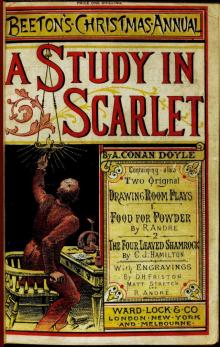 A Study in Scarlet
A Study in Scarlet The Firm of Girdlestone
The Firm of Girdlestone The Cabman's Story
The Cabman's Story The Adventures of Sherlock Holmes
The Adventures of Sherlock Holmes Round the Fire Stories
Round the Fire Stories His Last Bow: An Epilogue of Sherlock Holmes
His Last Bow: An Epilogue of Sherlock Holmes Micah Clarke
Micah Clarke The Exploits of Brigadier Gerard
The Exploits of Brigadier Gerard The Gully of Bluemansdyke, and Other stories
The Gully of Bluemansdyke, and Other stories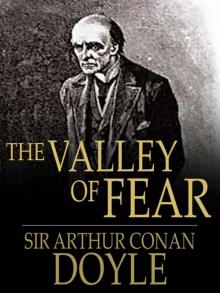 The Valley of Fear
The Valley of Fear The Last of the Legions and Other Tales of Long Ago
The Last of the Legions and Other Tales of Long Ago The Dealings of Captain Sharkey, and Other Tales of Pirates
The Dealings of Captain Sharkey, and Other Tales of Pirates The Hound of the Baskervilles
The Hound of the Baskervilles The Great Shadow and Other Napoleonic Tales
The Great Shadow and Other Napoleonic Tales The Adventure of the Dying Detective
The Adventure of the Dying Detective The Man from Archangel, and Other Tales of Adventure
The Man from Archangel, and Other Tales of Adventure The Poison Belt
The Poison Belt The Last Galley; Impressions and Tales
The Last Galley; Impressions and Tales The Adventure of Wisteria Lodge
The Adventure of Wisteria Lodge The White Company
The White Company The Mystery of Cloomber
The Mystery of Cloomber The Adventure of the Bruce-Partington Plans
The Adventure of the Bruce-Partington Plans The Adventure of the Cardboard Box
The Adventure of the Cardboard Box Danger! and Other Stories
Danger! and Other Stories Sir Nigel
Sir Nigel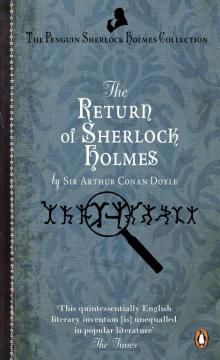 The Return of Sherlock Holmes
The Return of Sherlock Holmes The Adventure of the Devil's Foot
The Adventure of the Devil's Foot The Adventure of the Red Circle
The Adventure of the Red Circle The Memoirs of Sherlock Holmes
The Memoirs of Sherlock Holmes The Adventure of the Yellow Face
The Adventure of the Yellow Face The Adventure of the Norwood Builder
The Adventure of the Norwood Builder Mysteries of Sherlock Holmes
Mysteries of Sherlock Holmes The Adventure of the Missing Three-Quarter
The Adventure of the Missing Three-Quarter The Adventure of the Final Problem
The Adventure of the Final Problem A Scandal in Bohemia
A Scandal in Bohemia His Last Bow shssc-4
His Last Bow shssc-4 Beyond The City
Beyond The City The Adventure of the Gloria Scott
The Adventure of the Gloria Scott The Parasite
The Parasite The Land Of Mist pcs-3
The Land Of Mist pcs-3 The Adventure of the Musgrave Ritual
The Adventure of the Musgrave Ritual The Complete Sherlock Holmes, Volume I (Barnes & Noble Classics Series)
The Complete Sherlock Holmes, Volume I (Barnes & Noble Classics Series) The Adventure of the Stockbroker's Clerk
The Adventure of the Stockbroker's Clerk The Adventure of the Copper Beeches
The Adventure of the Copper Beeches The New Annotated Sherlock Holmes
The New Annotated Sherlock Holmes When The World Screamed pcs-5
When The World Screamed pcs-5 The Adventure of the Six Napoleons
The Adventure of the Six Napoleons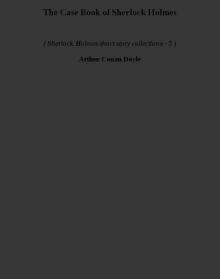 The Case Book of Sherlock Holmes shssc-5
The Case Book of Sherlock Holmes shssc-5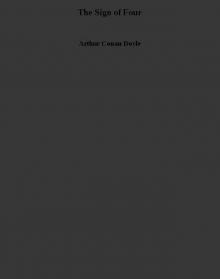 The Sign of Four
The Sign of Four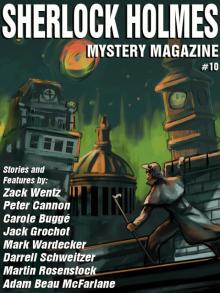 Sherlock Holmes Mystery Magazine #10
Sherlock Holmes Mystery Magazine #10 The Adventures of Brigadier Gerard
The Adventures of Brigadier Gerard The Adventure of the Second Stain
The Adventure of the Second Stain The Adventure of the Engineer's Thumb
The Adventure of the Engineer's Thumb The Mummy Megapack
The Mummy Megapack The Disintegration Machine pcs-4
The Disintegration Machine pcs-4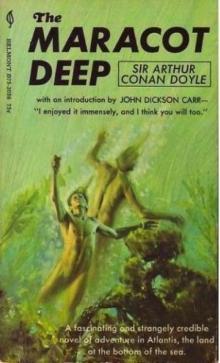 The Maracot Deep
The Maracot Deep The Five Orange Pips
The Five Orange Pips The Adventure of the Crooked Man
The Adventure of the Crooked Man The Adventure of the Blue Carbuncle
The Adventure of the Blue Carbuncle The Adventure of Silver Blaze
The Adventure of Silver Blaze The Adventure of the Solitary Cyclist
The Adventure of the Solitary Cyclist The Adventure of the Naval Treaty
The Adventure of the Naval Treaty Sherlock Holmes. The Complete Stories
Sherlock Holmes. The Complete Stories The Adventures of Sherlock Holmes (sherlock holmes)
The Adventures of Sherlock Holmes (sherlock holmes) The Adventure of the Empty House
The Adventure of the Empty House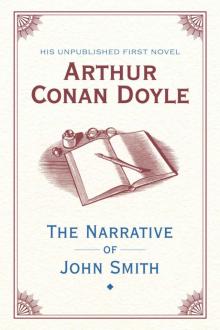 The Narrative of John Smith
The Narrative of John Smith The Return of Sherlock Holmes (sherlock holmes)
The Return of Sherlock Holmes (sherlock holmes) The New Revelation
The New Revelation A Study in Scarlet (sherlock holmes)
A Study in Scarlet (sherlock holmes) The Vital Message
The Vital Message Sherlock Holmes Complete Collection
Sherlock Holmes Complete Collection Round the Red Lamp
Round the Red Lamp The Boscombe Valley Mystery
The Boscombe Valley Mystery The Adventure of the Beryl Coronet
The Adventure of the Beryl Coronet The Refugees
The Refugees The Adventure of the Three Students.
The Adventure of the Three Students.